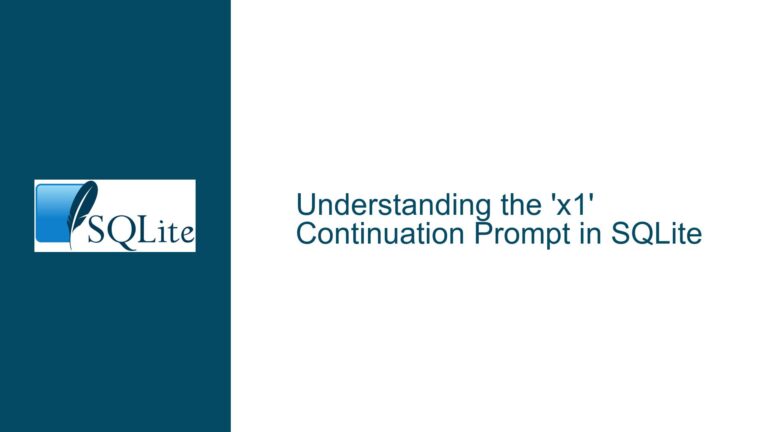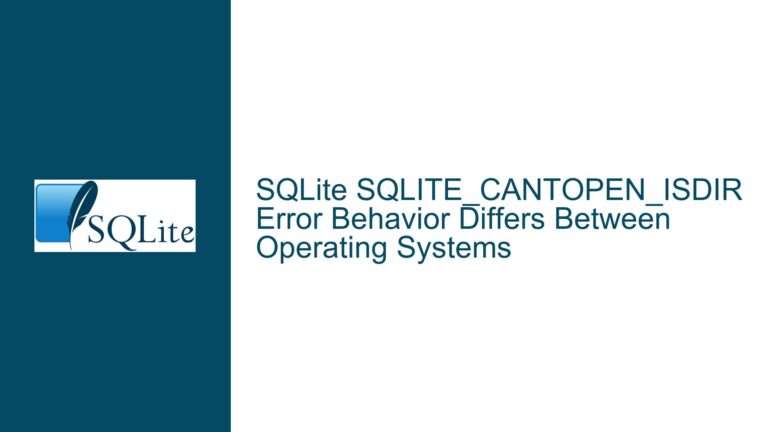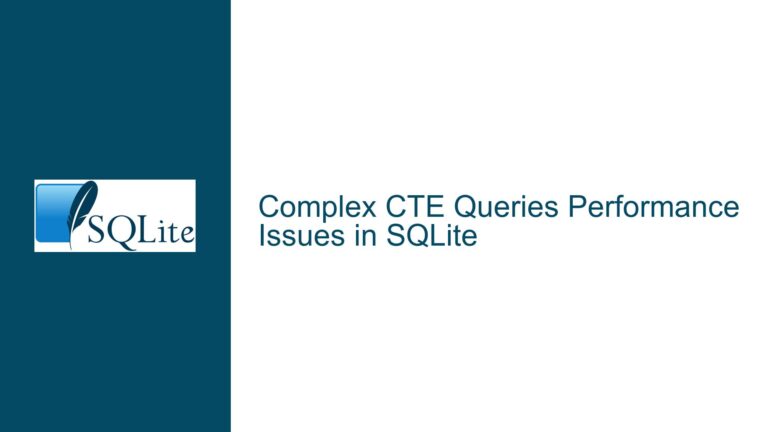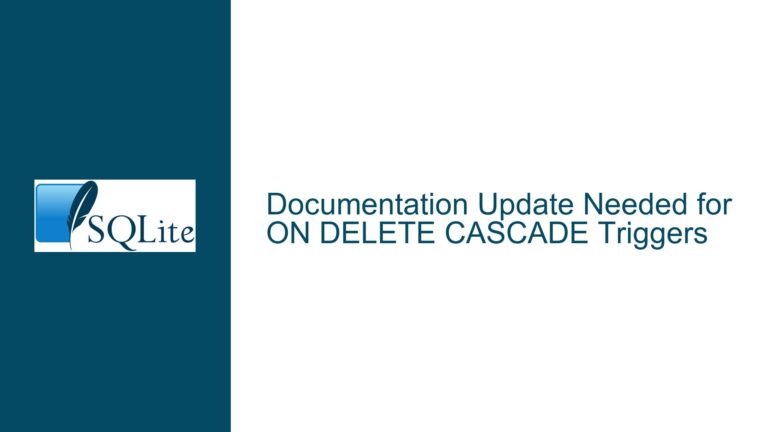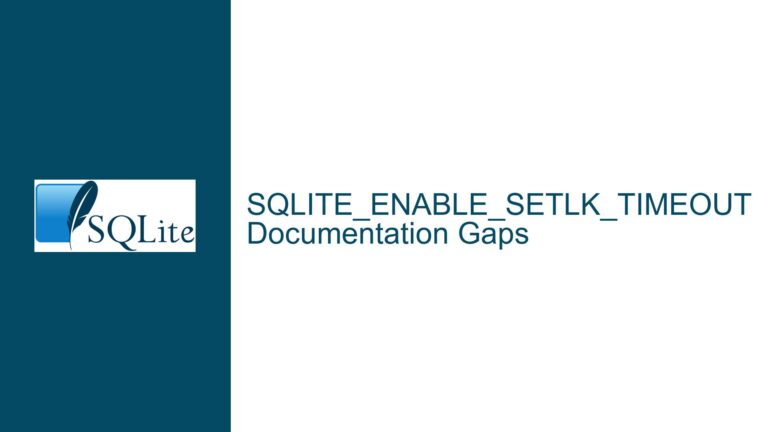Detecting Circular References in SQLite B-Tree Structure
Understanding Circular References in B-Tree Structures In the context of SQLite, a B-Tree (Balanced Tree) structure is crucial for managing data efficiently. It serves as the underlying structure for tables and indexes, allowing for fast retrieval and storage of data. However, one of the significant challenges that can arise when dealing with B-Trees is the…


